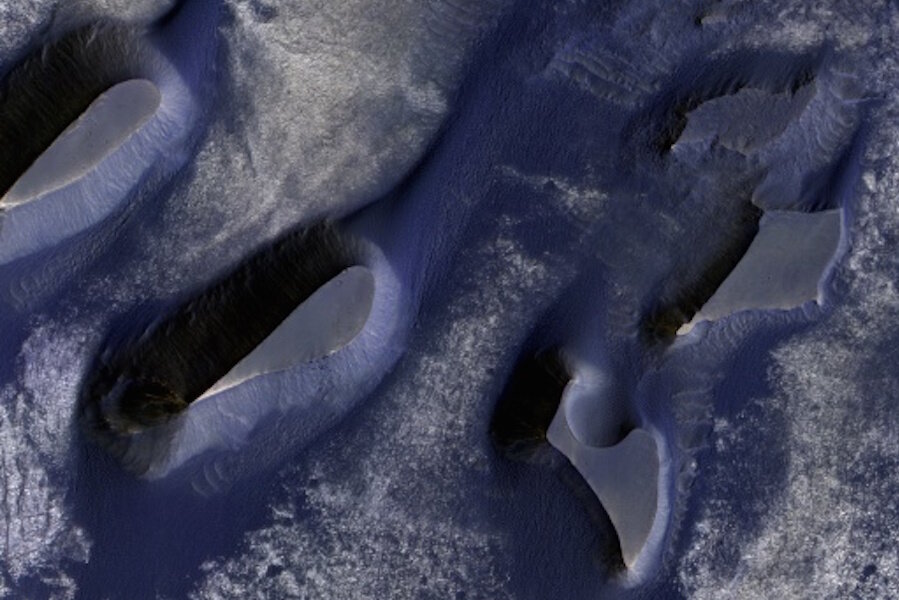What will huge new trove of color photos reveal about Mars?
Loading...
The Red Planet has just become 1,000 images more colorful. NASA released a bulk of new images on Tuesday taken by the HiRise – High Resolution Imaging Science Experiment – camera aboard its Mars Reconnaissance Orbiter.
This new release, one of the largest by NASA, includes images of the Martian terrain from pole to pole, from sand dunes to ice caps. That range and volume was possible because of the planet’s alignment with the Earth and Sun when the photos were taken in May.
Not only did Mars experience an equinox – during which the Sun was shining directly on its equator, lighting both poles – but it also happened to be orbiting in the best position for streaming data to Earth, Alfred McEwen told Popular Science.
The images HiRISE collects help geologists investigate “deposits and landforms resulting from geologic and climatic processes,” according to the HiRISE website, and will enable astronomers to choose a landing site for the next Mars rover.
The camera captures images down to a one-meter scale, comparable to a lander’s perspective, and thus provides “a bridge between orbital remote sensing and landed missions,” NASA writes. The types of Martian geologies the lander explores include but are not limited to: channels and valleys, former lakes and oceans, volcanic landforms, and glacial landforms.
NASA’s next Mars lander, InSight, is scheduled to launch in May 2018. The rover’s mission is to study Mars’s interior.
“InSight's investigation of the Red Planet's interior is designed to increase understanding of how all rocky planets, including Earth, formed and evolved,” Bruce Banerdt, InSight Principal Investigator at NASA’s Jet Propulsion Laboratory (JPL), Pasadena, Calif., said in a press release.
While HiRISE’s images help NASA accomplish its lofty goals, the camera also has a second, more humble, purpose: to be “the people’s camera.” NASA releases processed photos soon after they are beamed down from outer space, but the space administration also aims to involve the public more intimately.
The science community is invited to view and analyze the images and even direct where future images are taken by submitting observation requests. The public can even work with the HiRISE team to analyze data.
The effect of this invitation has already been demonstrated by “80,000 individual users who collectively identified essentially every impact crater on Mars,” HiRISE reports. The fidelity of the results was compared with the Barlow crater catalog. Users are also generating geologic feature databases and “may participate in image validation for the HiRISE team.”
A few of the images the public has requested in the past may be viewed in this Christian Science Monitor gallery.






